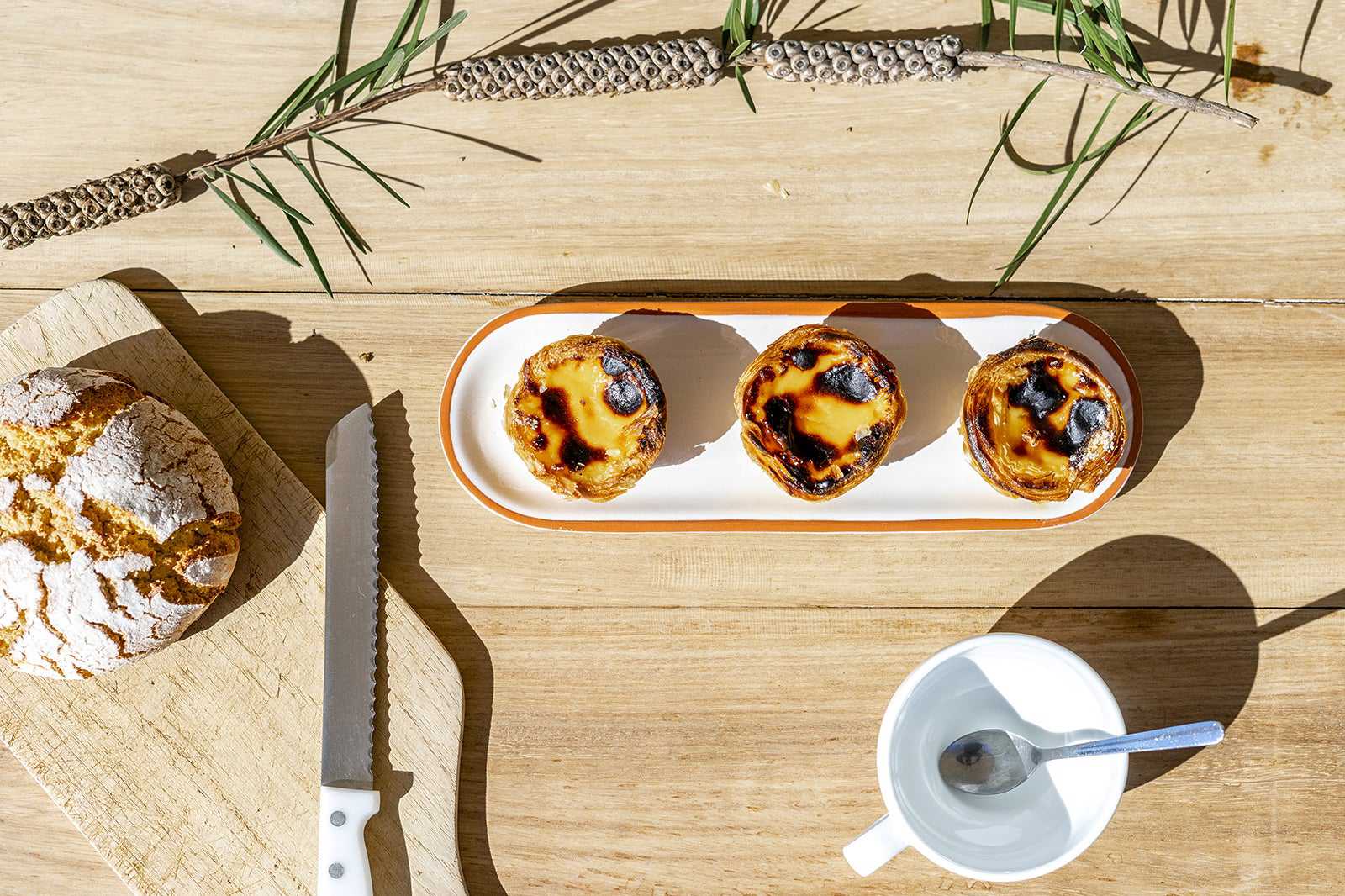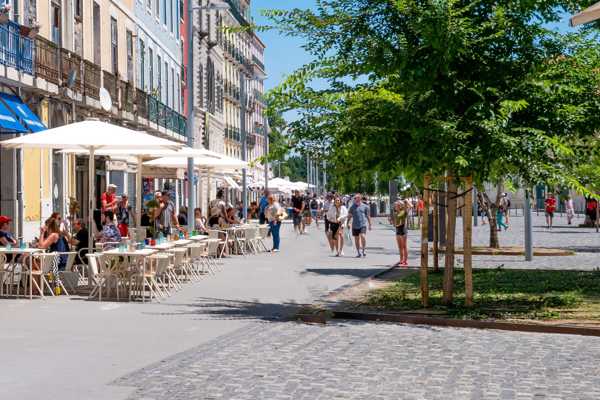This guide to the best local dishes in Lisbon will help you discover the tastiest food that Portugal’s capital has to offer. Whether you're looking for high-end seafood dishes or local snacks that can be picked up at street vendors, there is a variety of dishes to suit every type of traveller in Lisbon.
Most people have heard of Portuguese tarts or pastel de nata. However, you'll also find a range of other meals to try, such as local sardines and traditional meat stews. These are some of the best local dishes to try on your trip to Lisbon.
- 1
Bacalhau (cod)
A local favourite seafood staple in Lisbon

- Gastronomie
Bacalhau, or dried and salted cod, is one of the most popular local foods in Lisbon. The dish has a long history, dating back to when the Portuguese explorers ate preserved fish while sailing around the world. It’s still one of the most iconic things to eat while in Portugal, but there is a variety of ways to try the local cod.
Bacalhau a bras is a particularly popular dish, which is shredded cod mixed with potatoes, eggs, onions, chopped parsley, garlic, and olives. You can also try pasteis de bacalhau, or fried fish cakes with potatoes and herbs. Most restaurants in Lisbon will include bacalhau in some form on the menu, so you can try the local favourite in a variety of ways.
- 2
Ameijoas a bulhao pato (clams with sauce)
One of the most popular appetisers in Lisbon restaurants

- Gastronomie
Ameijoas a bulhao pato is one of the most popular seafood appetisers in Lisbon. The clam dish is named after the 19th-century Portuguese writer Raimundo Antonio de Bulhao Pato, who lived around Lisbon and often raved about the meal. The dish is made up of clams cooked in a sauce that consists of clam juice or lemon juice, white wine, garlic, and olive oil.
Ameijoas a bulhao pato is often served with bread for dipping into the sauce. Due to its popularity, the unique flavours of this dish are also added to other seafood dishes like cod. Most seafood or seaside restaurants in Lisbon have ameijoas a bulhao pato on the menu.
- 3
Bifanas (Portuguese pork sandwich)
A popular snack in Lisbon

- Gastronomie
The bifana is one of the most common street foods in Portugal. This pork sandwich can be found at virtually every street food cart or stall in the city. While quite simple, it’s full of flavour – thin slices of pork are marinated in white wine and lots of garlic before being fried and stuffed in a crusty bun.
It's particularly common to add mustard or hot sauce to the sandwich in Lisbon. Bifana is usually enjoyed with a beer as an afternoon treat, but you can also get it served on a plate with fries at some cafés.
- 4
Sardinhas (sardines)
A popular summer snack in Lisbon

- Gastronomie
Sardinhas (sardines) is one of Lisbon’s favourite seafood dishes. They are freshest in mid-June, which is also when Lisbon celebrates the Feast of St Anthony Sardine Festival. Expect a fun day filled with live music, vibrant parties, and sardine food stalls during this time of the year.
You can find the fish all year round at some seafood restaurants. The best way to enjoy grilled sardines is with fresh bread. You can also purchase canned sardinhas, which have become an unusually popular souvenir in Lisbon.
- 5
Caldo verde (green soup)
Portugal’s favourite soup

- Gastronomie
Caldo verde is an iconic soup in Portugal that's often served as an appetiser or snack. It can be found throughout the day and year at just about any local restaurant around Lisbon. The main ingredients of the soup are potatoes and kale, which is why it's known as green soup. It's often served with chorizo sliced on top, but you can skip it if you’re vegetarian.
While quite simple, it can be difficult to find an excellent caldo verde. When it’s cooked well, the soup tastes creamy despite the lack of dairy or cream in the recipe. It’s also a rather popular midnight snack in Lisbon.
- 6
Cozida a Portuguesa (mixed meat stew)
A traditional meat-heavy dish from the countryside

- Gastronomie
Cozida a Portuguesa is a traditional meat-based stew. The dish comes from the rural villages around Lisbon, particularly among farming families. They would cook whatever meat and vegetables they have on hand into a stew for everyone to eat. This would often include potatoes, carrots, sausages, cabbage, kale, beans, pork, and beef.
This comforting stew is full of flavour and quite filling. You can usually find it year-round at traditional restaurants in Lisbon, though it’s most popular in the winter months. Some places may even add pig ears and pig feet to the stew.
- 7
Polvo a lagareiro (octopus in olive oil)
A popular octopus dish often served with potatoes

- Gastronomie
Polvo a lagareiro is octopi cooked in olive oil and herbs. It's an alternative to the well-known dish bacalhau a lagareiro, which is made with cod. The simple yet refined dish is often served at upmarket seaside restaurants in Lisbon. The octopus is usually boiled then grilled with a generous amount of olive oil and garlic.
This dish is commonly served with batatas a murro, which translates to 'punched' or 'smashed' potatoes. The spuds are boiled, then usually finished off with octopus in olive oil. It's a must-try for any seafood lovers when visiting Lisbon.
- 8
Queijo de azeitao (semi-soft cheese)
A unique Portuguese cheese from near Lisbon

- Gastronomie
Queijo de azeitao is a semi-soft cheese that’s unique to Lisbon and its surrounding areas. Portuguese cuisine contains plenty of cheese, despite not being known as a prominent exporter of the popular dairy product. This particular type of cheese originated from Azeitao, a small town just 35 km southeast of Portugal’s capital city.
Queijo de azeitao is made from raw sheep’s milk. The best way to enjoy this gooey cheese is with bread or crackers, as the buttery centre is very spreadable.
- 9
Alheira (Portuguese sausage)
Smoked Portuguese sausage with a long history

- Gastronomie
Alheira is a unique smoked Portuguese sausage. It’s a combination of meats, bread, and olive oil. It has an interesting history in the country’s culinary scene. During the Spanish Inquisition, the Jewish community began eating alheira made with poultry and bread. This allowed them to maintain a kosher diet without being suspected of being Jewish.
Today, you can find non-kosher alheira made with pork or beef, and heavily seasoned with garlic. Most Lisbon restaurants serve the sausage with a fried egg and fries for a brunch-type meal.
- 10
Pastel de nata (custard tart)
One of the most well-known Portuguese desserts

- Gastronomie
Pastel de nata, or Portuguese custard tart, is one of the most famous desserts to come out of Lisbon. The golden puff pastry of the tart envelops a rich egg custard. While it’s very common around the city, it’s rumoured that only 3 people in the world know the real recipe. The original custard tart comes from Pasteis de Belem near Lisbon, where they produce around 22,000 tarts per day.
No matter where you go in Lisbon (or Portugal, in fact), most pastelerias (pastry shops) and cafés sell their own version of pastel de nata. It's one of the most iconic local treats to try while you're in Lisbon.



















